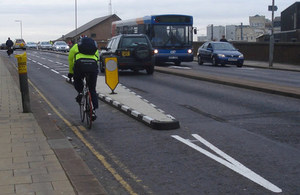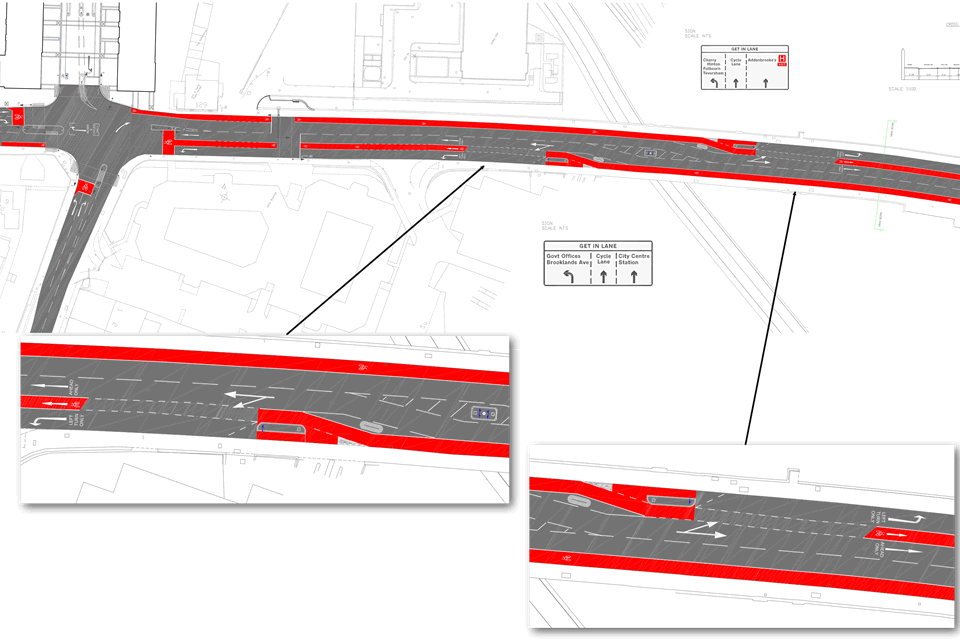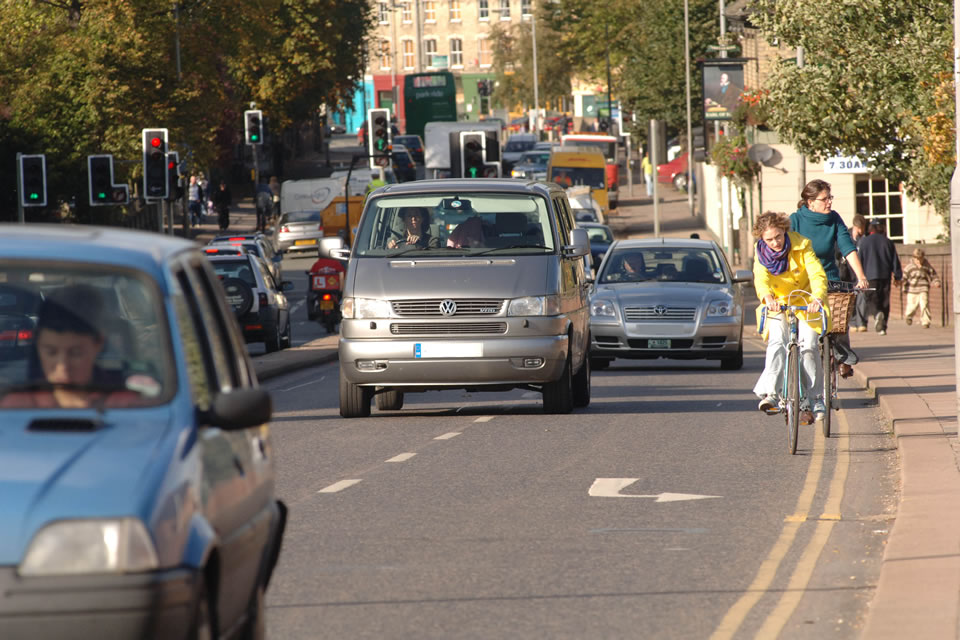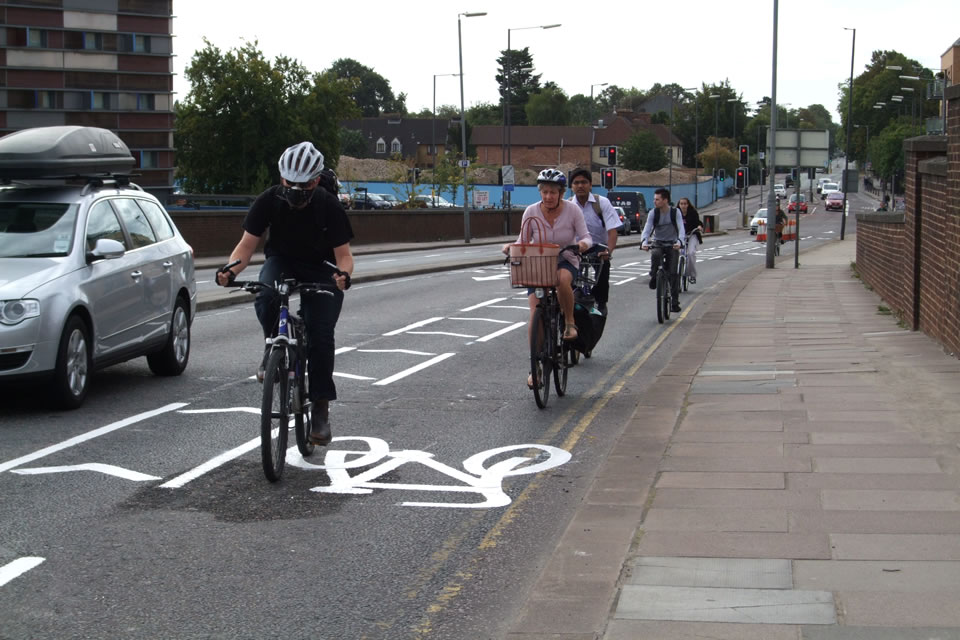Wide cycle lanes on Hills Road bridge, Cambridge
Improving cyclist safety by reallocating road space to suit the primary traffic flow.

What we did
Cambridge city council redesigned a dual carriageway bridge as 2 cycle lanes and 3 traffic lanes. The £500,000 scheme was opened in 2011, and improves cyclist safety on this busy route into Cambridge.
On the approaches to the bridge we created 2.1 metre wide, machine-laid red tarmac cycle lanes next to the kerb. At the summit of the bridge the lanes switch to put cyclists in a central position between straight-on and left-turning traffic. This assists the dominant movement of cyclists at the signalled junctions at each end of the scheme, where 80% of cycle traffic goes straight on.

Diagram showing new scheme
The traffic capacity of these junctions was maintained by providing one uphill traffic lane in each direction on the bridge, widened to two downhill traffic lanes on the approaches to the signals.
Why we did it
Hills Road bridge carries the main traffic link between the city centre and south Cambridge over a railway line.
The bridge carries 8,000 motor vehicles per day (including 200 bus movements) and 4,000 cyclists. Close to the bridge on one side is a 2,000 student sixth form college, and Cambridge Leisure Park with its multi-screen cinema.

Hills Road before scheme
The bridge had no facilities for cyclists, a history of collisions involving cyclists, and a particular conflict at the junctions at each end of the bridge, where left turning motor traffic conflicted with the large number of cyclists travelling straight ahead.
How we did it
We launched a consultation in 2007 with 4 options to improve the situation on the bridge. They ranged from introducing shared use paths, through to bridge widening and building an adjacent foot/cycle bridge.
The consultation proved inconclusive, with the public and stakeholders evenly split as to the best option, and a general feeling that none of the options offered a good level of provision for users.
We considered the options again. Based on observation, we decided that the existing dual carriageway could be changed to a ‘one lane up the bridge, two down’ design to create space for cycle lanes. At each end of the bridge traffic queued for signal controlled junctions, so there was greater need for traffic lanes leaving the bridge than on the ascent to it. Removing the central kerbed reservation on the bridge added further useable space. This gave flexibility for emergency vehicles to cross the bridge more quickly, and encouraged slower vehicle speeds.

Hills Road trial scheme
What we learned
We initially introduced the scheme as an easily removable trial, which helped overcome doubts about the scheme. Once it was shown to work well we obtained political consent and the final scheme was implemented in 2011.
We planned the work on the new cycle lane to coincide with other work on the bridge so road users were aware of the disruption in advance.
The scheme has had a significant impact on recorded accidents. A total of 19 accidents were recorded between 2009 and 2011, but after its implementation the number of recorded accidents fell to 9 between 2012 and 2014.
Further information
For further information:
- contact Mike Davies on Mike.Davies@cambridgeshire.gov.uk
- photos of the cycle scheme
- watch a video of the scheme below
Cycle lanes on Hills Road Bridge http://www.camcycle.org.uk/jumpto/HillsASL